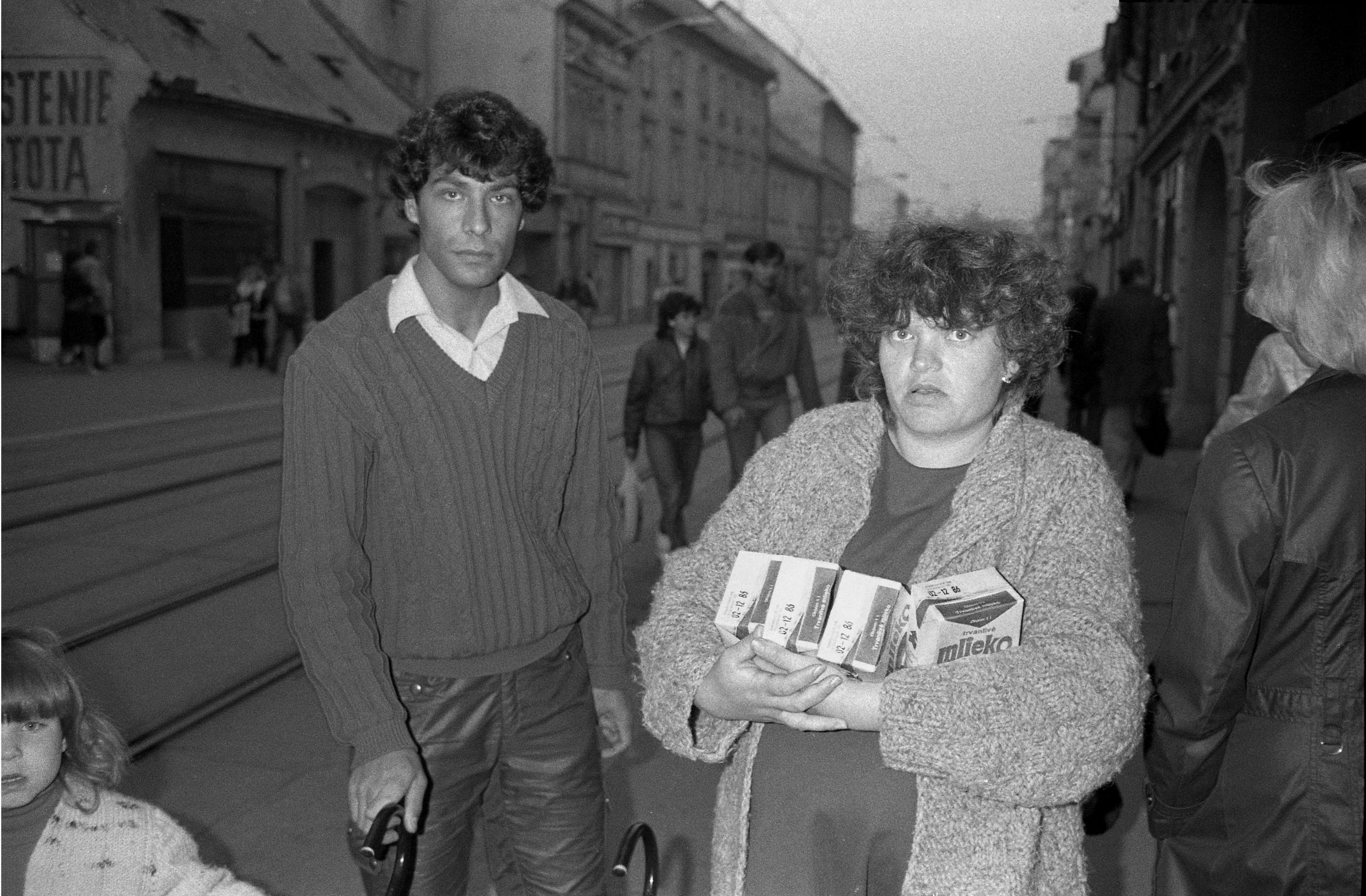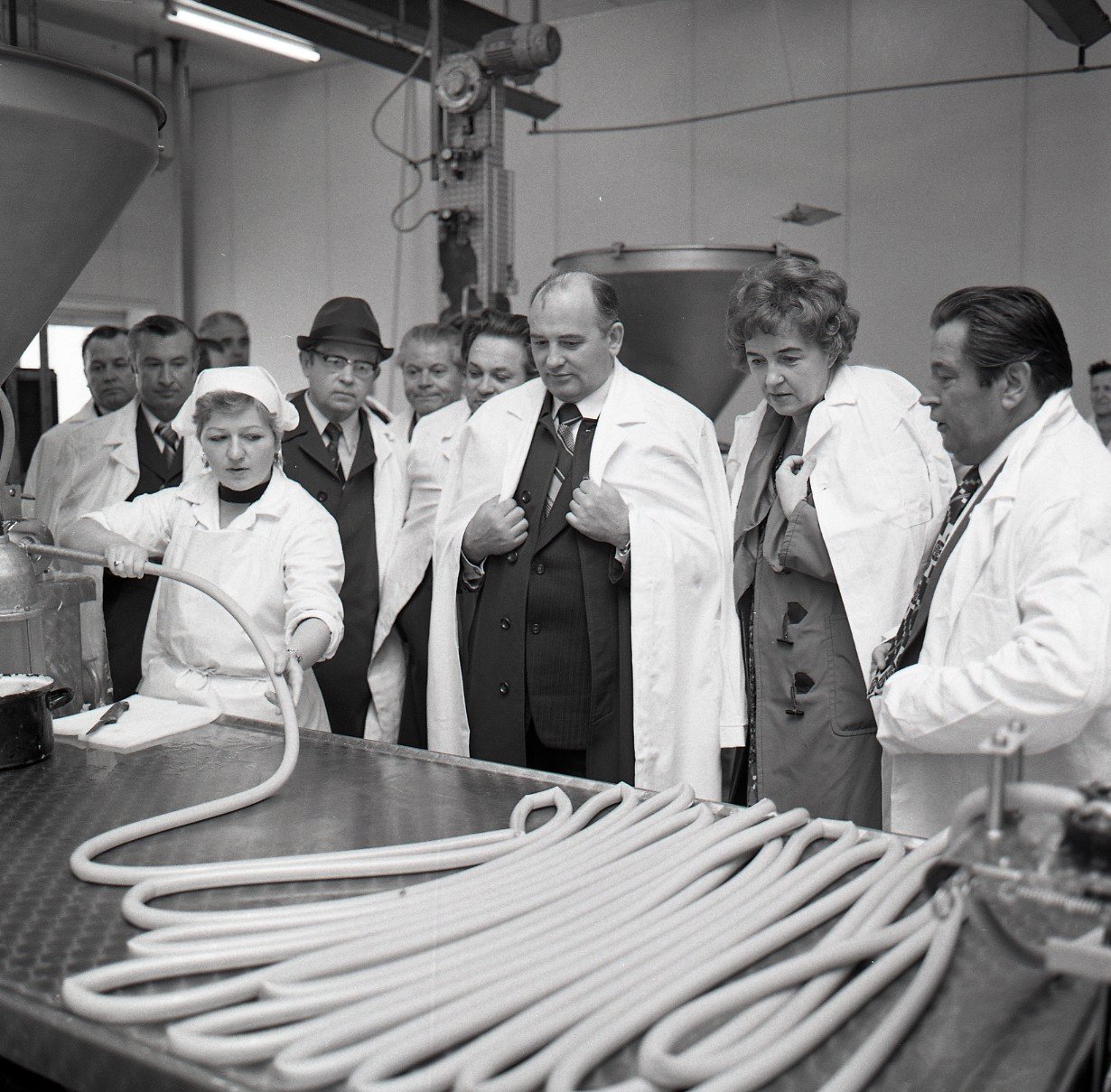“For a majority of citizens, the standard of living during socialism was higher than today, people could afford more from their incomes”
according to 55% of respondents participating the April 2018 poll carried out by the FOCUS agency.
Facts and disproval of the myth ↓
Shortly after seizing the power in February 1948, communists quickly undermined and continued undermining the standard of living throughout the entire socialist era. Through “nationalization” and “collectivization”, they robbed people of their property and the 1953 monetary “reform” stole also peoples´ savings. In addition of those thefts under the direction of the state, the standard of living of people kept on falling behind the standard of living enjoyed by the West and was lower than in our country today due to the economic failures of socialism throughout the entire period of its existence.
Also, according to official statistical data, we were falling significantly behind the countries with market economies as concerned development of real wages. While during the years 1970 through 1988, the average real wage in socialist Czechoslovakia grew by 1.3% per annum on average based on the cost of living index and only by 0.3% based on the calculations concerning official average prices, the average real wages in Austria and Finland grew by 2.5% on average, for instance.
A comparison of the end of the socialist era with our current situation shows similar results. While the average pension adjusted for inflation stagnated in the eighties of the 20th century, it has been increasing significantly after a short transformation related drop.
The average wage and average pension have increased more significantly than inflation or prices for a majority of goods and services in Slovakia after the year 1989. It means that an employee receiving the average wage and a pensioner with the average pension can afford more of almost all goods than they were able to afford by the end of the socialist era. Today, an employee with the average wage may buy 4 times more and a pensioner with the average pension 3.6 times more chickens than in 1989 (see Tables 3 and 5), for instance. Passenger vehicles are more affordable today, for instance – while in 1989, a Škoda car cost approximately 27 average monthly wages, in 2018, a simple passenger vehicle could be bought for 11 average wages.
The situation is similar when it comes to, for instance, holiday that is on average more affordable for people today than during the socialist era.
The real purchasing power of people during the socialist era was even lower and lagging behind the then purchasing power in the West and the current purchasing power in our country more significantly than official statistical data indicates, which was caused by artificially low official prices for subsidized goods and higher shadow economy prices for goods and services that people were often buying, which were not included in official statistics.
The inhabitants´ standard of living was limited also by insufficient, and much lower when compared with Austria and other Western countries, level of durable goods, electrical appliances, cars, etc. For instance, Czechoslovakia recorded 27 radio receivers per 100 inhabitants in 1983 while in Austria it was 53 radio receivers and in 1989, Czechoslovakia had 15 connected telephones and 20 passenger vehicles per 100 inhabitants while in Austria it was more than 40 telephones and 39 cars per 100 people at that time.
The standard of living was limited also by the low quality of goods and services and limited assortments and increasingly frequent shortages of certain goods common then and now. Current consumer can only hardly imagine people queuing for meat or oranges or the waiting lists with long waiting periods for passenger vehicles, but that was the reality until 1989.
The lower quality of life of people during the socialist era is documented also by the indicators concerning life expectancy and health (chapter 2.7 Health and healthcare system) and bureaucratic barriers to travelling abroad, particularly to Western countries, such as special travel permits and foreign currency allowance permits (chapter 2.5 Financial and property related situation of people). The major restriction to the quality of life of people during the socialist era was their overall unfreedom, including the impossibility to travel to a Western country.



